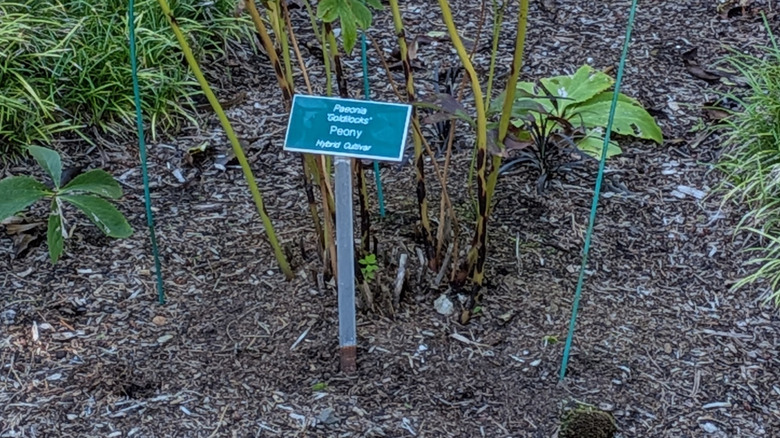How To Winterize Peonies In November For Strong & Stunning Blooms In The Spring
If you want a garden full of gorgeous big peony flowers next spring, the groundwork starts in November. It's easy to overlook your perennial shrubs once the weather turns cold. Getting your peonies ready for winter is the most important step you can take to guarantee a lot of blooms once spring comes around again. This process involves waiting until the foliage has died back from the frost and then cutting the stems down to a few inches above the ground. You'll also need to clear away any trimmings to prevent disease and add a protective layer of mulch around the plant's roots.
Peonies (Paeonia spp.) have a long lifespan, often lasting for generations in a garden. Most of the common garden varieties grow best in USDA Hardiness Zones 3 to 8 because they require a period of cold to set their flower buds for the next season. Knowing how to care for peony plants in the fall or early winter makes all the difference in the amount of blooms you'll see in the spring. Winterizing your garden is a task that simply has to be done if you grow these pretty shrubs. Dedicate a small amount of time to the task in November and your peonies will grow and flower well for years to come.
Why you need to cut back peony leaves in early winter
Gardeners should wait until after the first frost to cut back their herbaceous and intersectional peonies, when the green foliage turns yellow or brown. Waiting for this color change is important because, up until this point, the leaves are still actively absorbing sunshine and creating energy the plant will store in its roots. It's what the plant relies on to survive the winter and produce new growth and flowers in the spring. Those who know how to successfully grow peonies are aware that once the foliage dies back in the fall or winter, it has served its purpose and needs to be removed.
Pruning your peonies at the right time removes leaves and dead wood that can host diseases like botrytis blight and gray mold. These harmful microbes can survive the winter in dead plant matter, waiting to infect new growth in early spring. Use a clean, sharp pair of clippers to cut the stems back between 1 and 3 inches above soil level. Sterilize the blades in isopropyl alcohol between plants to prevent cross-infection. After pruning, gather all the dead stems and leaves and throw them away to remove any potential source of infection. This ensures your plants have the best chance once the ground thaws. Never put them in your compost pile because the fungal spores can survive and spread through your compost.
How to protect peony roots and tasks to avoid in late winter
After all that careful work to avoid the common mistakes everyone makes when pruning peonies in late winter, you need to protect the plant's roots and help it go dormant. For a peony to bloom, it needs to spend at least six weeks in temperatures below 40 degrees Fahrenheit. Older plants are tougher and can handle these cold winters on their own, but younger or newly planted peonies will benefit from a layer of mulch. You can add a layer of shredded leaves or straw about 2 inches thick around the base of the plant to insulate the roots. Be careful to not bury the root crown or any visible new buds, as this can reduce spring growth and prevent flowering.
This mulch layer also helps regulate soil temperature, preventing the freeze-thaw cycle that can push young plants up out of the ground. You should give your peony plant a good watering right before the ground freezes, but avoid adding any fertilizer. Fertilizer encourages new growth that would promptly get damaged by frost. Since these shrubs disappear underground during the winter, mark their location with a garden stake or label. You don't want to accidentally disturb the roots when working in the garden before the plant emerges again in the spring.


